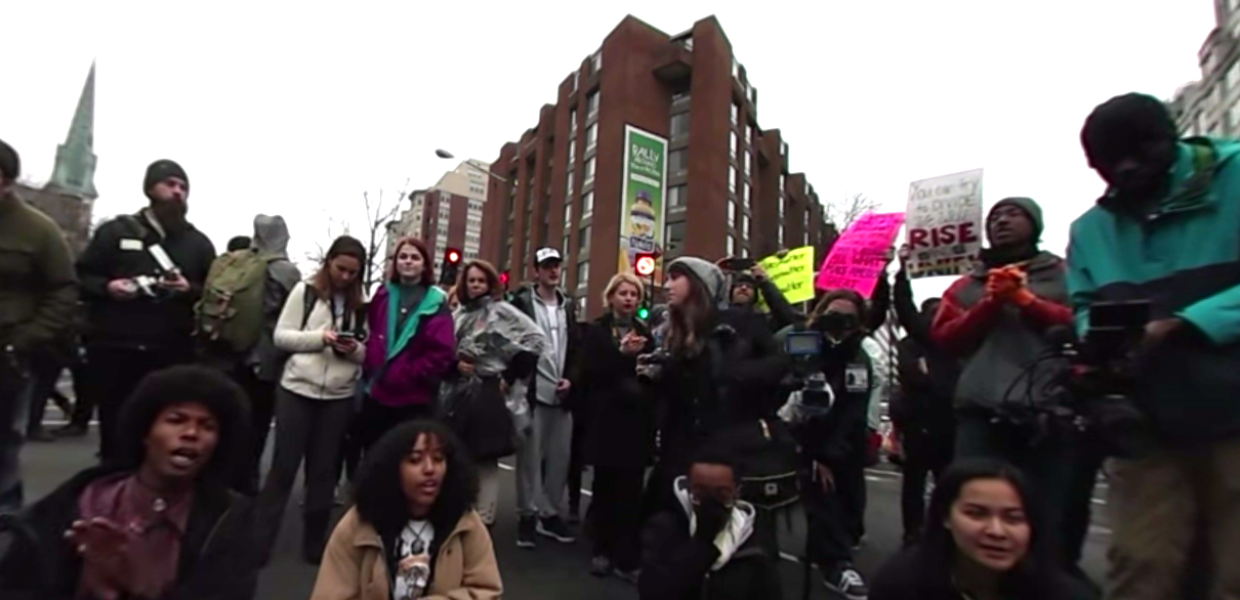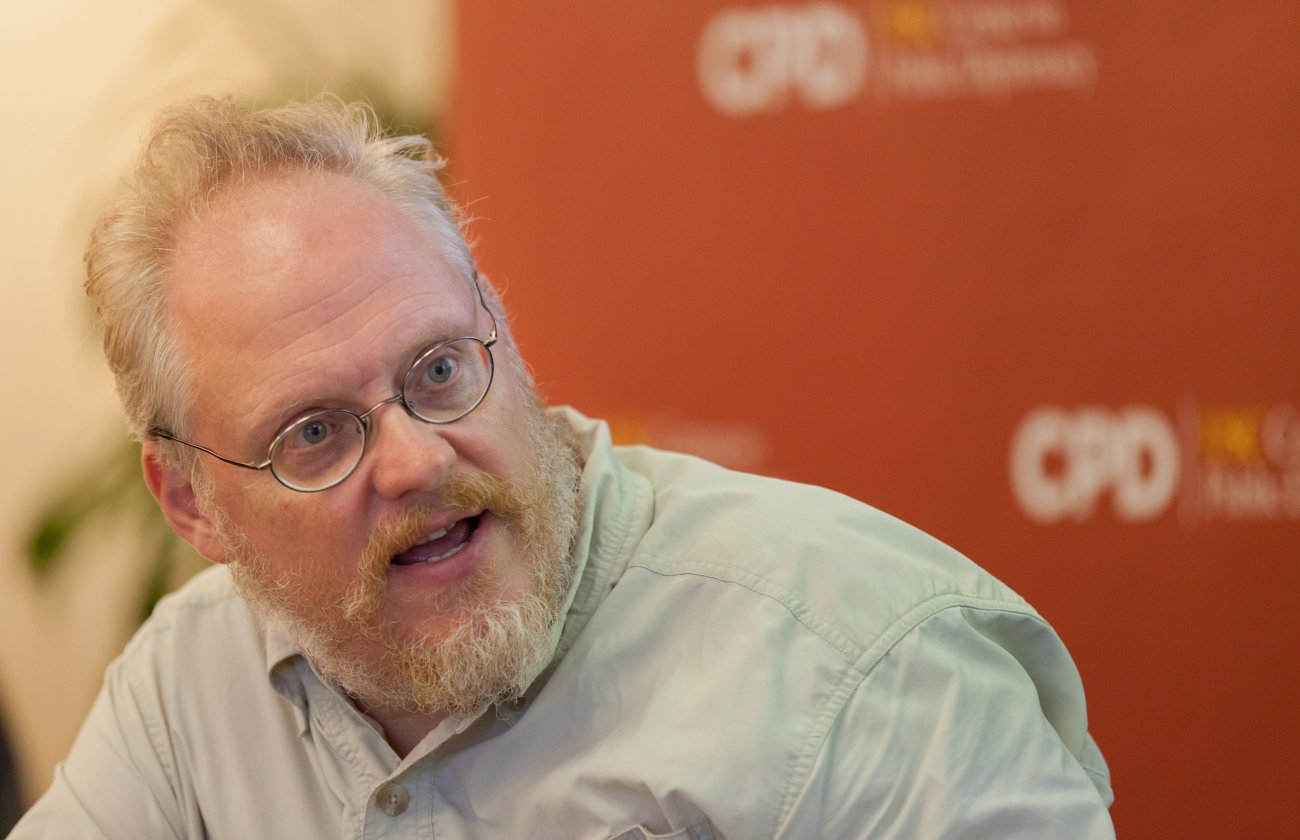A group of seven USC Annenberg student journalists traveled to Washington D.C. to cover the presidential inauguration on January 20, 2017 and the Women's March on Washington the following day.
Led by Robert Hernandez, Associate Professor of Professional Practice, the JOVRNALISM (VR journalism) team was a mix of domestic and international undergraduate, graduate and doctoral students, all equipped with the latest gear to capture the historical events in 360-degree video.
"It was an adventure with highs and lows, long days, no sleep and little food," Hernandez wrote in a recap of the events on the JOUVRNALISM blog. "It was also extremely productive."
For Kate Lonczak (B.A. Broadcast and Digital Journalism '18), it was an invaluable opportunity to learn the powerful VR journalism skills. She was responsible for capturing 360 video at both Trump International Hotel, where both protesters and supporters gathered, and at the Women's March on Washington.
"The highlight of my trip was being one of the first to document history using 360 video," Lonczak said. "Dozens of onlookers around me while I was shooting footage were fascinated by the medium, which tells me it is here to stay."
The team collaborated with the New York Times' 360 news team to provide footage for their "Daily 360" coverage of the event.
"Working with Robert and the USC students allowed us to expand our 360 coverage of a sprawling, fast-moving story," said Marcelle Hopkins, executive producer for 360 news at the New York Times. "By spreading out among the celebrations and protests, the students were able to capture moments that conveyed the energy of the day."
Additionally, immersive "postcards" of the inauguration and the Women's March produced by the JOVRNALISM team were shared by NPR on social media, becoming the first and second 360 news pieces published by the public media giant.
"It was a great way for us to get our feet wet in a medium we’ve only minimally tried in the past," said Claire O'Neill, producer at NPR. "We were really happy to give students a platform on which to publish their work."
"I'm very glad that NPR had that vision and also enough confidence in us to let us produce something for them that they usually do not do," said Disha Raychaudhuri (M.S. Journalism ‘17), who shot 360 videos of the inauguration and photos of the Women's March which were later incorporated into the videos.
Working with respected media outlets such as the New York Times and NPR was a highlight for many of the students on the team.
"I really appreciated working with NPR on the pieces," said Cameron Quon (B.A. Broadcast Journalism, '17), who led the production of the NPR pieces. "It was cool to Facetime with the editors and discuss news judgement and how best to capture this event."
"I also learnt quality control and saw firsthand why the NYT is the NYT," said Raychaudhuri. "[Their] energy and passion were almost contagious."
Given the unprecedented nature of this presidency, the team was not sure what to expect going in.
"I expected the inauguration to be absolutely packed. I expected violence. I expected the authorities to constantly be questioning us about our 'funny looking' cameras," Lonczak said. "In reality, the inauguration was not packed, I only witnessed verbal violence, and not one person of authority questioned me or my camera."
"Being a woman of color and a foreigner, I was mildly apprehensive about how I'd be treated while out there, but it wasn't so bad," said Raychaudhuri, who nevertheless felt that security spent an inordinate amount of time searching her backpack. "Definitely more than my American team members," she said.
Karl Baumann (PhD Media Arts and Practice ‘17) recalled a police officer who unexpectedly became a member of the team.
"At one point, I had to exchange batteries and memory cards with another team member (Lonczak) who was by the Trump hotel, but the street between us was fenced off and surrounded by police. We had to charmingly convince these police officers to walk our batteries and memory cards across the street between us. If those police weren't so nice (and bored), we would've never been able to get all of our shots."
"We did this three times with three different police officers," Lonczak said.
Baumann noticed a distinct difference in tone between the inauguration and the Women's March the following day. On inauguration day "both Trump supporters and protesters seemed ready to fight," he said. "The Saturday Women's March on the other hand was the most peaceful and polite protest that I've ever attended."
The trip felt like an endurance test at times, but it ultimately was a priceless learning experience for the team.
"I don't think I've done too many things that were simultaneously so exhausting and satisfying," Raychaudhuri said. "We worked for close to 16 hours for a 1 minute 48 second video and were standing for 13 hours during that span of time."
"We barely slept and hardly ate," Quon said. "But it was all worth it, and I'd do it again!"








